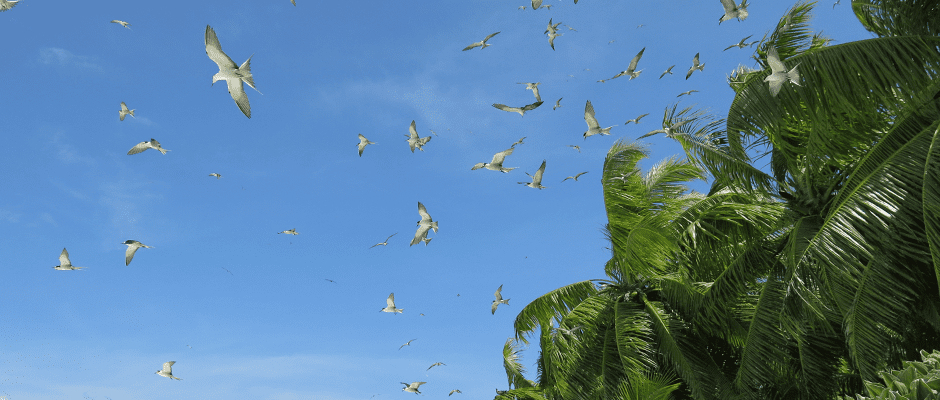Share this article
Removing invasive island rats could help coral reefs
Invasive rats are notorious for their devastation of island ecosystems, but their damage might go deeper than scientists once believed. Biologists recently discovered that nonnative rats could impede the flow of nutrients from seabirds to the world’s vanishing coral reefs, and they stress the need to exterminate the rodents to conserve these diverse marine habitats.
“These ecosystems are so intimately linked — the open ocean, islands and coral reefs,” said Nicholas Graham, lead author on the paper published in Nature. “When that gets disrupted from as simple a thing as accidentally introducing rats to islands, it has big repercussions for ecosystems.”
A marine ecology professor at the United Kingdom’s Lancaster University, Graham and his fellow researchers traveled to the Chagos Archipelago, a few hundred kilometers south of the Maldives in the Indian Ocean, in 2015 to investigate the effects of invasive black rats (Rattus rattus). The pests had taken over some of the islands after arriving in ships in the late 1700s and early 1800s and wiped out numerous seabird populations nesting in these spots. Examining 12 islands, Graham’s team sought to assess the rats’ impacts on the nearby coral reefs, which rely on the birds’ guano for nutrients. Half contained rats, while the other half retained 14 seabird species — including boobies (Sula spp.), noddies (Anous spp.) frigate birds and shearwaters — that consume fish in the ocean and dump a lot of the obtained nitrogen onto the islands.
“There were over 760 times more seabirds and around 250 times more nitrogen on islands where there were no rats compared to islands with rats,” Graham said.
Gathering soil and fresh leaves from the islands as well as algae, sponges and fish muscle tissue from the coral reefs, he and his colleagues traced the nutrients out into these neighboring coral ecosystems.
“There was a very clear signal of seabird feeding on fish from the islands onto the reef, and there was more nitrogen adjacent to the islands with seabirds,” Graham said.
The researchers then captured damselfish, studied their ear bones’ growth rings. They found the fish near islands with seabirds were growing faster than those near islands with rats.
Final underwater surveys revealed that the abundance and weight of fish communities in the reefs bordering islands inhabited by seabirds were about 50 percent greater, Graham said. These fish ate more than three times as much algae and cleaned up more than three times as much dead coral, he said, which facilitates the regeneration, productivity and stability of new coral.
“Eradicating rats from tropical islands should be a really high priority for management and conservation,” Graham said. “It’s low-hanging fruit. It’s not difficult to do. It’s not costly. And it will have a huge benefit for both the terrestrial environment in terms of seabirds and vegetation and the adjacent marine environment in terms of the functioning of coral reefs, which need all the help they can get at the moment with climate change.”
Following a massive Chagos coral die-off in 2016 in the wake of an El Niño weather pattern, the scientists are now looking into how nutrients from seabird droppings could fortify and mend reefs after such impacts.
Header Image: Terns fly over a coral reef lagoon. ©Nick Graham








